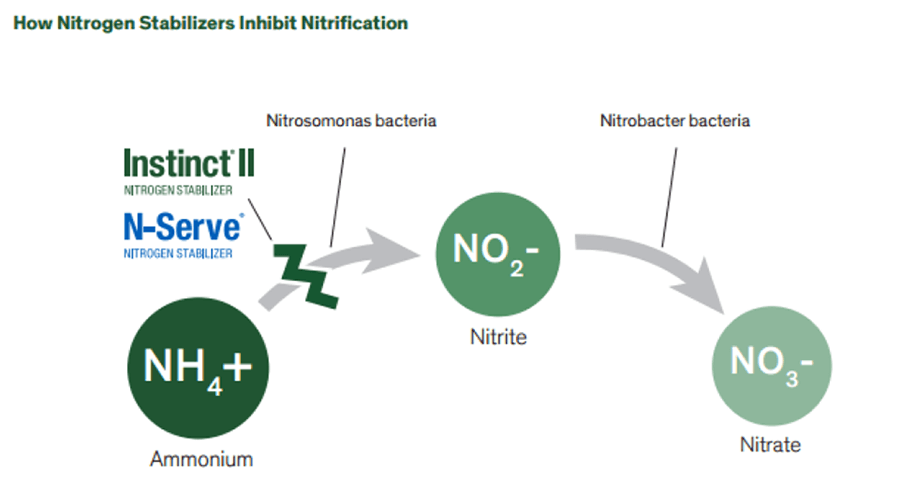2020.10.23 Growing Insight
Oct 23, 2020

| Harvest Update |
| Sunday, October 18th recorded 96% of MN soybeans harvested, according to the NASS Crop Progress Report. This is up from 86% from the week prior and significantly above the 5-year average at 67%, and 35% harvested in 2019 on the same date. Corn harvest has been rolling steady as well, with Oct. 18th progress across MN at 63%, up from 44% the week before. Harvest last year was at 9% and the 5-year average currently sits at 29%. |
| Fall Nitrogen Management |
| As harvest progress continues, fertilizer applications will become a high priority. After a growing season like 2020, the topic of nitrogen management for 2021 will be critical. No matter the source of N you may plan on using for your 2021 corn crop needs, the risks of N loss associated with each source needs to be considered to make the best management decision. In the following table, you will a short synopsis on potential N loss by each source of N fertilizer. |
 |
If N stabilizers are used, the amount of N loss can be reduced, even if weather conditions are not ideal. There are two categories of N stabilizers generally used: nitrification inhibitors and urease inhibitors.
|
 |
| One of the most difficult challenges for any farmer is developing an N management plan that keeps N accessible to growing corn roots when they need it the most. With 50% of N uptake coming between V10 and R2, it’s crucial to keep nitrogen from moving outside of the effective rooting depth through midsummer. If you are applying nitrogen this fall, June-July-August is a long ways away. Risk is measured by the time it takes to convert from ammonium to nitrate. The closer you apply nitrogen to when the corn plant needs it, the less risk you have of a leaching rain or prolonged wet soils to cause denitrification. With several fall nitrogen application options available to us, it is crucial to remember implications and associated risks with each option. Time, temperature and moisture drive the nitrification process of moving ammonium (immobile) to nitrate (mobile), and soil microbes are responsible for the conversion. The warmer the soil temperature, the quicker the conversion occurs. The type of nitrogen source, the application process, and if you used a stabilizer determines risk potential. Anhydrous ammonia sticks to the soil as ammonium and isn’t leachable right away, but using a stabilizer can help slow down the conversion of ammonium to nitrate. Nitrifying organisms can function down to 32° F at a slower rate. Long periods of time at low soil temperatures still above 32° F can result in nitrification of a small percentage of fall-applied N, and opening up for a greater potential of leaching! It’s important to wait until soils reach 50° F and lower when applying; however, that is not always enough to prevent nitrification entirely. That is why stabilizers play a crucial role. Adding more N or waiting until 50° F is not solely enough to eradicate the potential for nitrification. Products like N-Serve that contain the active ingredient nitrapyrin temporarily slow down the bacteria’s ability to convert ammonium to the leachable form. Using a stabilizer is your way of buying insurance when you use it in conjunction with applying anhydrous below 50° F! |
| 2021 Sulfur Strategy |
| According to corn tissue samples taken across the state of MN in 2020, 25% of samples were deficient/responsive in sulfur between V4-V8, 96.6% of samples were sulfur responsive/deficient between V10-V14, and 86.2% of samples were sulfur responsive/deficient between R1-R4. Sulfur is a critical nutrient to make proteins in the plant, and about 25 pounds are taken up in a 230 b.p.a. corn crop. Only 40-50% of total sulfur is taken up by tassel, so sulfur needs are focused on late-season in corn. The most important source of sulfur in most situations is sulfur released from organic matter. Organic sulfur must be mineralized to sulfate sulfur. Soil temperature and moisture largely determine when and how much of the organic form of sulfur is made available to the crop. Cold and excessively wet or dry conditions reduce microbial activity and reduce S availability from soil organic matter and crop residues. At most, only a few percent of the organic sulfur is made available to the crop annually. A fall-applied sulfur option is elemental sulfur, that is initially immobile. For elemental sulfur to become available to a growing crop, it must be broken down into sulfate by soil microbes. Microbes need warm, moist soils with adequate aeration to work, and the oxidation process of elemental sulfur makes sulfur slowly available over time. Elemental sulfur helps complement the use of in-season applications of sulfur by providing a stream of available sulfur over extended amounts of time. Talk to your CFS representative on potential fall sulfur strategies for your acres! |
